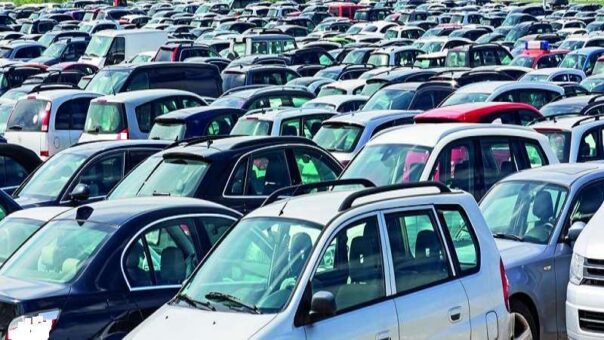Pakistan has seen an unprecedented surge in car imports, with a 274 percent increase during the first nine months of the fiscal year 2023-24.
The Pakistan Bureau of Statistics (PBS) released data showing that from July 2023 to March 2024, the country imported motor cars worth $186.52 million, up from just $50 million during the same period in the previous fiscal year.
The dramatic rise in imports is largely attributed to the State Bank of Pakistan’s (SBP) recent policy adjustments. After years of restrictive measures on foreign payments to stabilize the local currency and preserve foreign exchange reserves, the central bank has relaxed these restrictions, triggering a flood of imports.
Automotive industry analysts are viewing this shift as a double-edged sword. While the surge in imports provides consumers with more choices and aligns with global automotive trends, it also raises questions about the long-term sustainability of such high import rates amidst Pakistan’s current economic framework.
“The relaxation by the SBP has indeed made it easier for automotive dealers and companies to import vehicles,” explained Junaid Mirza, a Karachi-based automotive analyst. “However, we must be cautious about the potential strain on our foreign exchange reserves and the broader economic implications.”
In addition to the rise in car imports, total imports of completely built unit (CBU) vehicles, which include all types of motor vehicles, registered a 53 percent increase, totaling $232 million during the period under review, compared to $151 million in the previous fiscal year.
Interestingly, not all sectors of the vehicle import market saw growth. The import of CBU heavy vehicles saw a significant decline, dropping 56 percent to $44 million from $100 million in the same period last year. The import of motorcycles also decreased by 12 percent, amounting to $1.2 million compared to $1.33 million previously.
This shift in import patterns has implications for various stakeholders in the automotive industry. For dealers, the influx of imported cars presents a boon, potentially boosting sales and profits. For consumers, it means a wider range of vehicle choices, possibly at more competitive prices due to increased market competition.
However, this surge has also sparked debate about the impact on local manufacturers and the overall economy. “There’s a delicate balance that needs to be maintained,” noted Mirza. “While imports are necessary to meet consumer demand and keep up with technological advancements in the automotive industry, supporting local manufacturers and job creation in Pakistan is also crucial.”
Economic experts suggest that while the current increase in car imports may stimulate consumer spending and vehicle sales in the short term, there is a need for a coherent policy that supports both the import market and the domestic automotive industry without jeopardizing the nation’s economic health.
The government and the SBP might need to reassess their approach as the fiscal year progresses, considering not only the benefits but also the potential risks associated with a high volume of imports. As Pakistan navigates this complex landscape, the decisions made in the coming months could have long-lasting impacts on the automotive sector and the broader economy.
